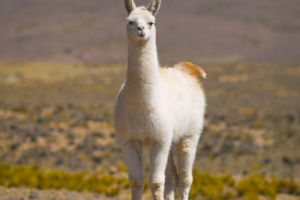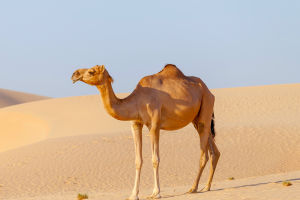Exploring the fascinating world of South American camelids offers a wonderful experience for our Lykkers. Llamas and alpacas, two closely related yet distinct animals, capture attention with their unique features and cultural significance.
This guide will help clarify the key differences between these two charming creatures, providing clear and detailed information to understand them better.
Origins and Habitat
Native Regions
Both llamas and alpacas originate from the mountainous regions of South America, mainly found in Peru, Bolivia, and Chile. These animals belong to the camelid family and play an important role in the livelihoods of Andean communities.
Ecological Role
As herbivores and ruminants, llamas and alpacas contribute to their ecosystem by grazing on native grasses and helping maintain the balance of their natural habitats.
Physical Characteristics
Size and Build
Llamas stand out as the largest domestic camelids in South America. They can grow up to 1.2 meters tall at the shoulder and weigh approximately 110 kilograms. Their longer legs and neck give them a tall, elegant posture.
In contrast, alpacas are smaller and more compact. They usually reach about 90 centimeters in height and weigh between 55 and 65 kilograms, making them noticeably lighter and shorter than llamas.
Head and Facial Features
Llamas have larger faces with longer muzzles, accentuated by big, expressive eyes. Their ears are distinctively long and curved inward, often described as banana-shaped.
Alpacas, on the other hand, possess smaller, more delicate faces with shorter noses. Their ears are smaller and pear-shaped, giving them a gentler and softer appearance.
Coat and Wool Quality
Fur Texture
One of the most notable differences lies in the coat texture. Llamas have a thicker, coarser fleece that is less uniform and often feels rougher to the touch. Their wool is more durable but less prized for fine textile production.
Alpacas boast a much finer and softer fleece. Their wool is highly valued for its luxurious softness and warmth. This superior quality wool has made alpacas a key resource for the textile industry worldwide.
Uses of Wool
While llama wool is often used for rugs, ropes, and heavier textiles, alpaca wool is preferred for clothing and accessories due to its softness and insulating properties.
Behavior and Temperament
Temperament Differences
Llamas are known to be more independent and sometimes serve as guard animals for herds of alpacas or other livestock. They tend to be confident and alert, making them suitable for protection roles.
Alpacas are generally more timid and gentle creatures. They prefer the company of their own kind and can be shy around strangers but are affectionate within their groups.
Cultural Importance
Historical Role
Both llamas and alpacas have been integral to Andean societies for centuries. These animals were essential for transportation, wool production, and as a food source, deeply embedded in the traditions of the indigenous peoples of South America.
Modern Significance
Today, llamas and alpacas continue to support local economies through tourism and the global wool trade. Their unique qualities attract visitors and artisans alike, celebrating the rich cultural heritage tied to these animals.
Summary of Key Differences
- Size: Llamas are larger and taller than alpacas.
- Ears: Llamas have long, curved ears; alpacas' ears are smaller and pear-shaped.
- Face: Llamas feature a longer face; alpacas have a smaller, softer facial structure.
- Wool: Llamas have coarse, thick fleece; alpacas possess soft, fine wool prized for textiles.
- Temperament: Llamas are more independent and protective; alpacas are gentle and shy.
Final Words
Understanding the distinctions between llamas and alpacas enriches the experience of observing these fascinating South American animals.
Our Lykkers can appreciate not only their physical differences but also their unique roles in culture and economy. Both animals offer a glimpse into the natural beauty and heritage of the Andes, making them remarkable creatures worthy of admiration and respect. Sharing this knowledge helps preserve their legacy and encourages further curiosity about the diverse animal world.


